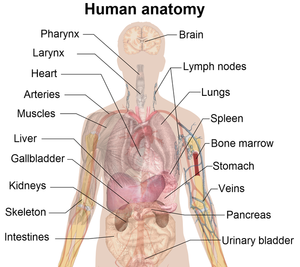Normal human physiology and anatomy have the heart slightly to the left in the chest cavity while the liver is on the right side of the body. In rare cases, situs inversus occurs. The disorder involves the abnormal placement of internal organs according to HealthLine.com. Instead of the liver and spleen being on the right in opposition to the stomach, the liver is on the left side of the chest. All of the other internal organs are switched around on the other side of the body instead of what is expected.
Causes
As of right now, there is no known cause for situs inversus. The disorder is congenital and is not believed to be genetic. For some reason internal organs get switched in a young embryo before it matures into a fetus in the womb and the organs are switched around internally and grow larger that way.
Scientists have found a gene that helps determine organ placement in the body but how it determines where organs grow is unknown. As the embryo grows, the initial blood vessels that form the heart arrange themselves first and then the other organs grow later. It is believed that this initial forming of the heart on one side of the chest or the other is what determines where the other organs grow.
Complications
About one in 8,500 people have situs inverssus and usually lead normal lives. Complications from the condition generally involve the functioning of the heart called dextrocardia. WebMD further explains that this symptom rarely causes any serious side effects. This heart defect occurs in 3 to 5 percent of situs inversus patients, when you compare to just one percent of Americans who have heart defects in general which is why this symptom of situs inversus stands out as more common.
More noticeable, according to the report on Healthline, are the twenty five percent of those with situs inversus who have primary ciliary dyskinesia, or PCD. PCD occurs when the tiny hair-like structures in the lungs cease to function properly causing respiratory distress, mucous build up, and increased susceptibility to lung infections. The PCD Foundation estimates that 25,000 Americans have this disorder.
What You Can Do
Unfortunately, situs inversus is rare enough that not many doctors know how to look for it. Sometimes a congenital heart defect is found when a heartbeat is stronger on the right side of the chest instead of the left. A further investigation with an MRI or other type of body scan will reveal organs flip-flopped.
The actual problem of situs inversus cannot be corrected. If heart defects accompany the disorder, those can be examined by a cardiologist for possible procedures.
This article is for informational purposes and should not be construed as actual medical advice. If you doctor determines you have situs inversus discuss all possible options if you have possible complications such as respiratory issues or heart defects.
HeathLine, WebMD, and the PCD Foundation all contributed information for this article.




